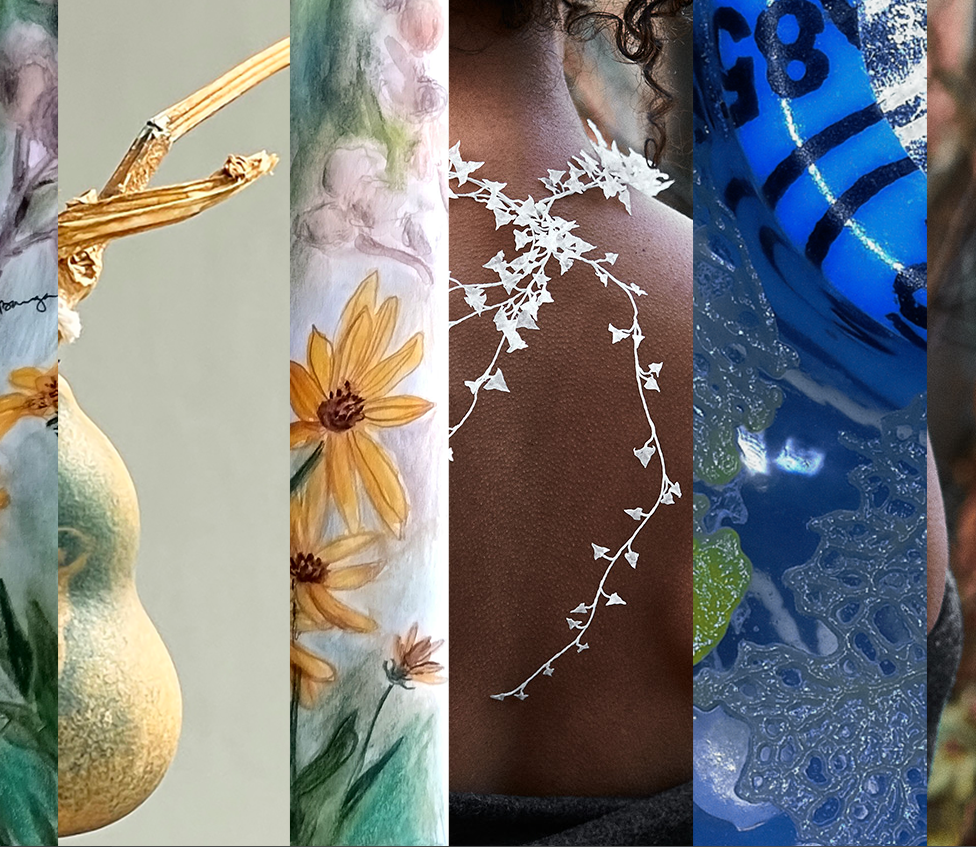
The February Art Gallery features the work of NeoMeta, Wiebke Pandikow, Agnese Bankovska and Sophie Anna Gibbings. Mediums include jewellery, plastics, living organisms, drawing, installation, sound, printmaking, alternative process photography, painting, and sculpture.
Artist: NeoMeta
Title: MetaNature
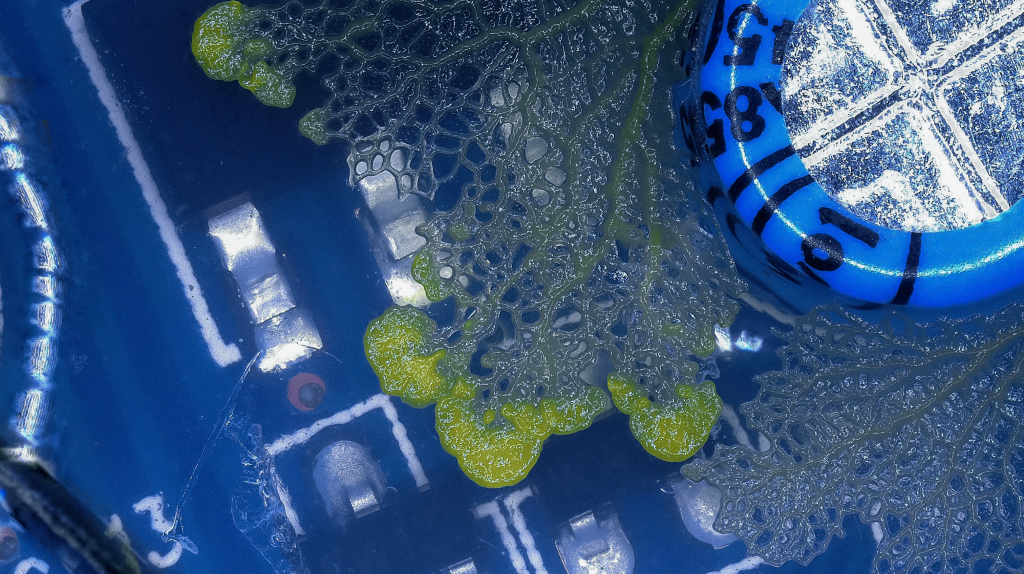
NeoMeta explores hidden narratives and unheard stories of slime and plants with the non-living post-human ecosphere of the technical discarded in a semi-real, semi-imagined Future Nature.
Interactive, living and growing installation exploring the alternative future of NatureCultures through the critical post-humanism lens. Growing slime on microchips. Exploring interspecies communication and bioacoustics through capacitive sensing. This work showcases a dynamic symbiosis between living organisms and electronics, delving into unheard narratives of the slime mould and plants with discarded electronics. This artwork encourages a deeper understanding of the evolving relationship between the living and non-living.
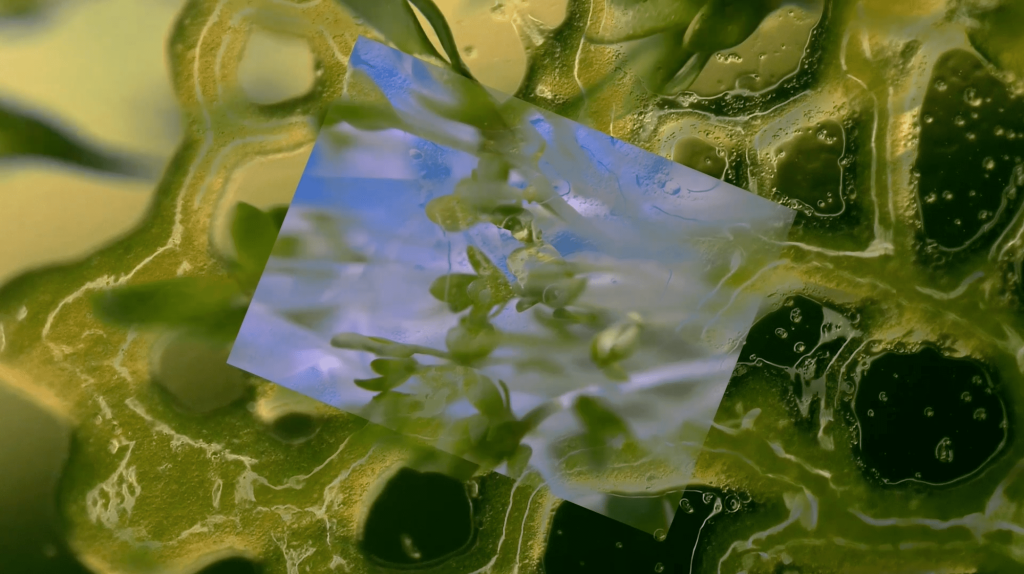
Approach/Process: The submitted artworks depict slime mould growing on the discarded e-waste parts under microscopy lenses of various magnifications, as part of ongoing experiments in the CSM Grow lab between the living and non-living. Here is a short film as a result of this fieldwork and experimentation:
You can follow NeoMeta on Julia Shu’s website here: neometa.art on Instagram: @neometa.art and on YouTube: NeoMetaArt. The artwork installation preview is here: https://www.instagram.com/reel/C2kC63ENo1-/
Artist: Wiebke Pandikow
Title: Herbarium Series
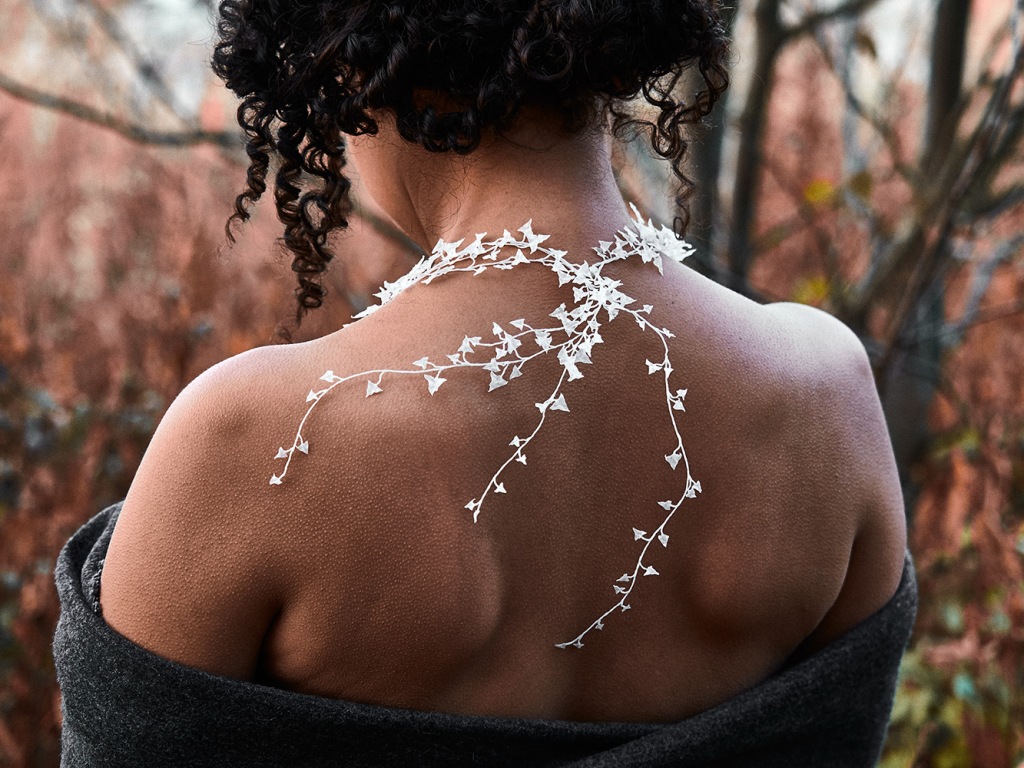
The series consists of necklaces made from wood and recycled plastic bags. The bags have been turned into heaps of pale leaves loosely imitating the shapes of leaves of different botanical genera – hence names like Tropaeolum, Aponogeton, Hedera.
Juxtaposing the time it takes to form oil from decaying organic material (and plastic from oil), with the time a plastic bag is used before it is discarded (sometimes mere minutes), the refined oil that is plastic has been given back its original organic form.
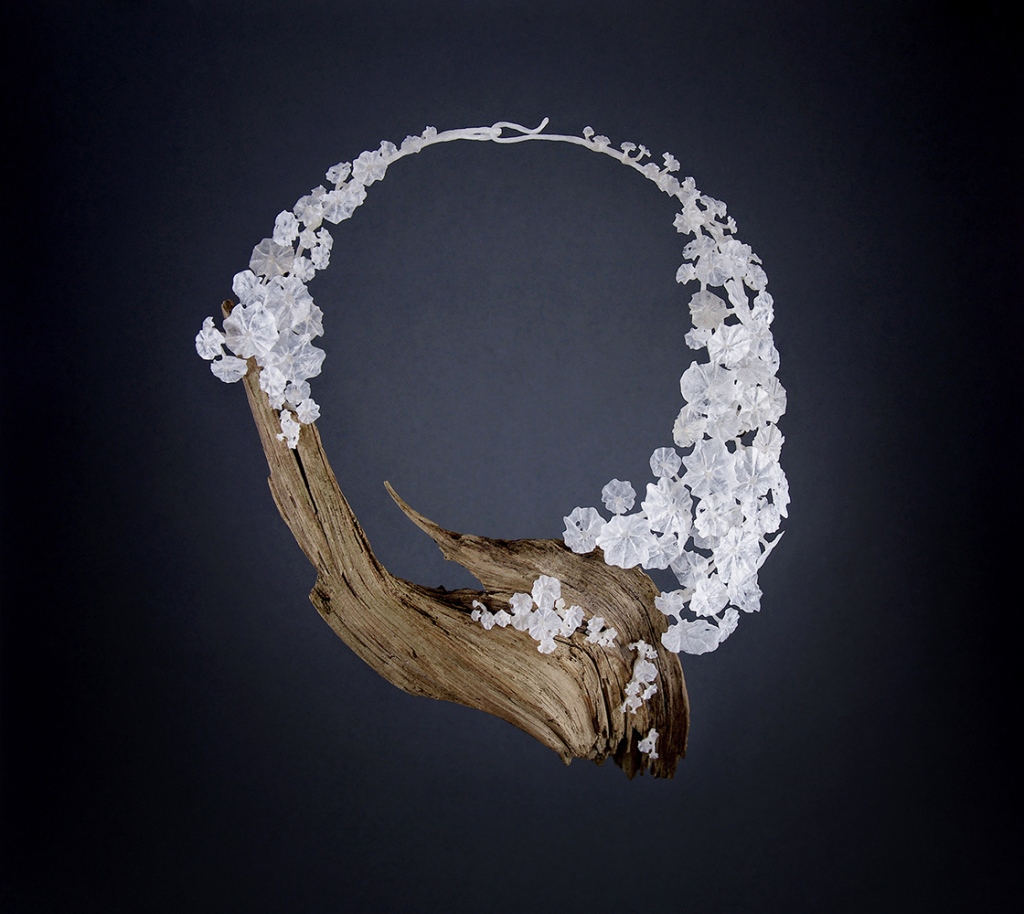
German material based visual artist living in Finland, Wiebke Pandikow, since 2014 has been working with plastic bags. She writes:
Without the ubiquitous plastic our civilization could hardly have become what it is today, but at the same time it is a burden on the environment with far-reaching consequences. Especially plastic bags are an obvious symbol for mindless consumerism and a throw-away society. This makes them so interesting for me to work with, to create from them textures and structures that recall forms of the natural world which we have set ourselves apart from.
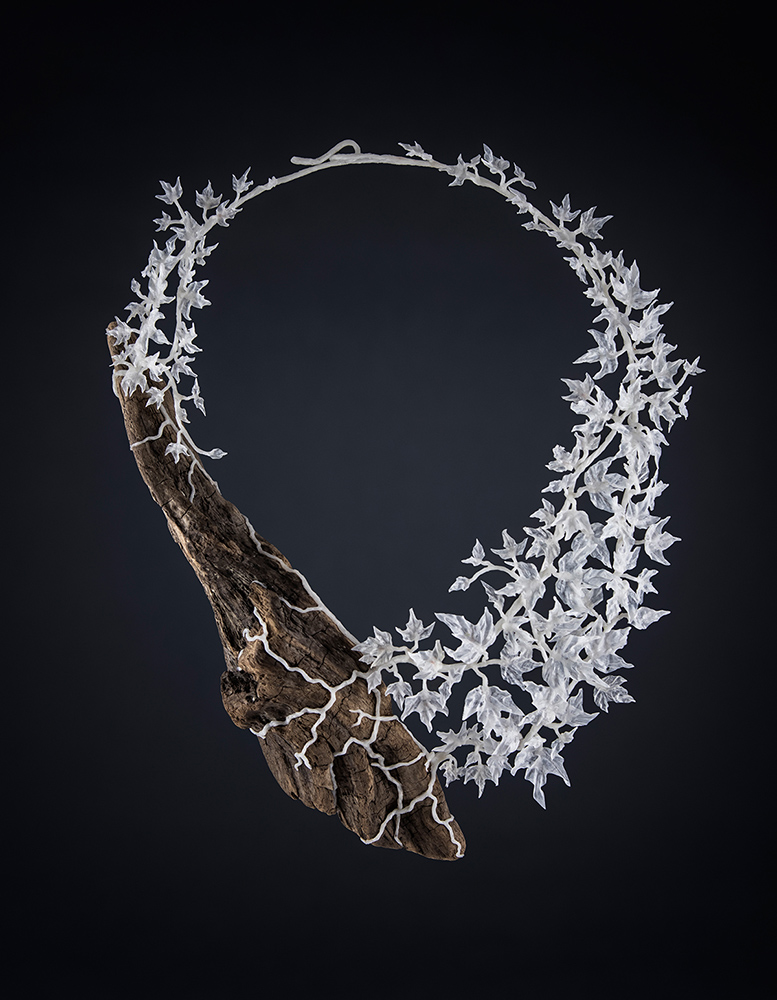
Most of my older work is made from thin, translucent plastic bags of the kind usually found in grocery stores when buying fruit and vegetables. They are bags that have been used once or twice, then have ripped or become perforated and would now normally be discarded. I wash them if necessary, then, with the help of a flat iron, I fuse several layers of them into a slightly thicker plastic sheet, while others are cut into strips, twirled into strings and similarly fused. To create leaves, I cut different shapes from the sheet and shape each single leaf into its final form with a soldering iron.
Title: Tide Growth Series
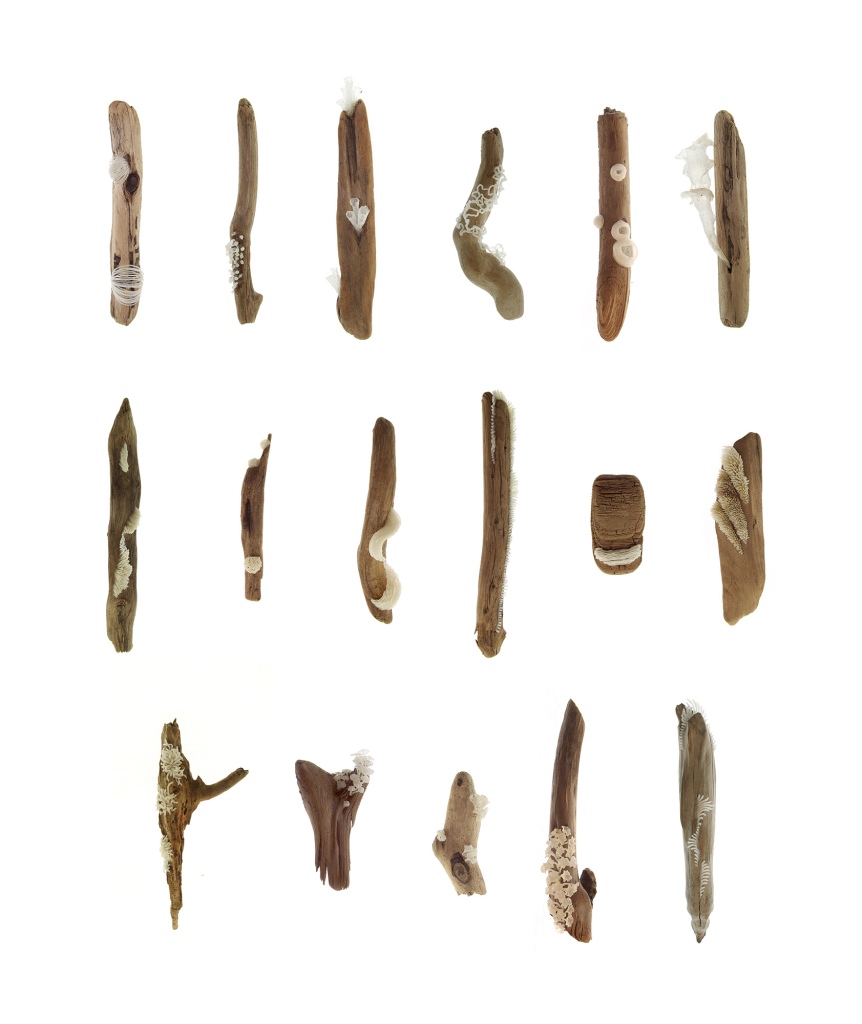
The series consists of altogether 50 brooches made from driftwood and recycled plastic bags with the brooch mechanisms from stainless steel. They tell a story of sea creatures making use of plastic waste.
“In a sea awash with plastic, little creatures swarm.
They prod and nudge the bags and bottles, the disposable cups and forks and straws and knives.
They investigate those things in their small creature ways, nibbling and scratching, testing, breeding, dying.
On a rocky shore by a northern sea, waves roll onto small sand beach in a sheltered bay. As they wash toward you and the land, some carry a strange treasure with them. Small pieces of washed wood, smooth from their time in the water. But it is no ordinary driftwood they bring. You pick one up and see small structures on them, pale and rigid. Twisting strands of a tough material on one, a row of little white cups on another. A third shows structures like little trumpets, twisted and thin-walled, but firm to the touch. The little creatures have done what seems so hard for us. They have made do, they have used the material that was inflicted on them.
They have build their shelters on the driftwood. They have taken root in pale shelter in the tides.”
Title: Gyres and Waves

An land art installation made from living interwoven reed made on the shore of Öland, Sweden in August 2021. The height of the biggest spiral was about 1.7 m.
Most people know by now about the garbage patches in our oceans, gyres of marine debris created by ocean currents. While the Baltic Sea doesn’t have the same kind of currents to create its own garbage vortex, it certainly contains enough trash to fill one. Based on this I created Gyres and Waves.
“The sea connects us, currents carry us and ours, carry what we discard right back to us.
We cannot dump our problems in the sea, because we are connected to it, dependent on it. The currents will come back to haunt us.”
The artist was part of ‘Project Land Jewelry’ which Wiebke Pandikow organized along with colleague Maja Breife. Eight jewellery artists spent a week on Öland to create land art on the shore together. Find out more here: https://wpandikow.com/index.php/land-jewelry/. Follow Wiebke here: wpandikow.com and on Instagram @wpandikow
Artist: Agnese Bankovska
Title: Drawings of multispecies care in urban gardens
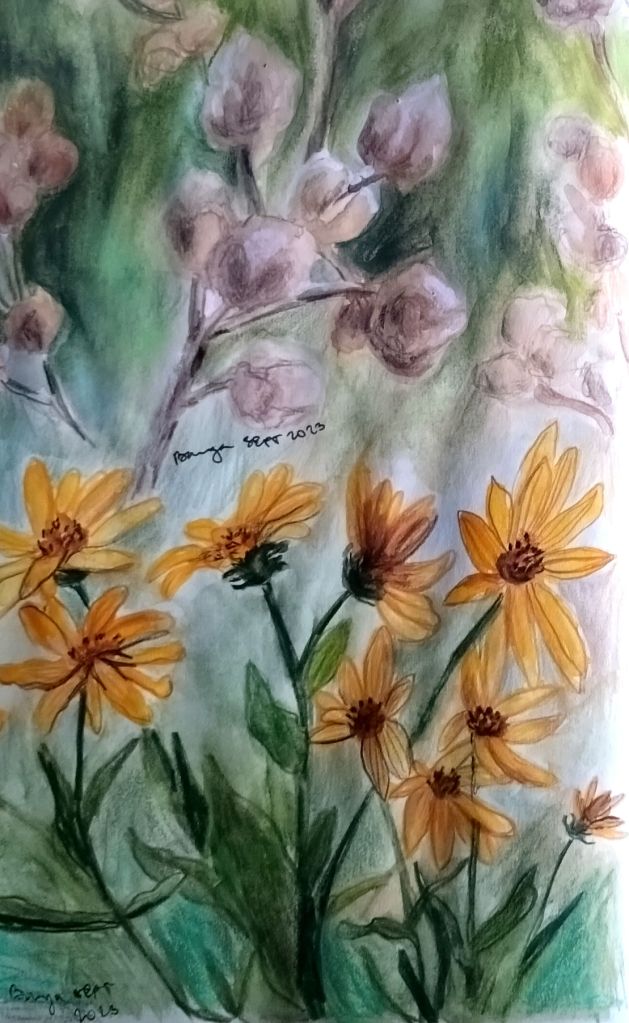
The three drawings are mixed media illustrations and an exploration of drawing/illustration as a method in researching multispecies relationships of care in the urban gardens in Finland.
One might ask whether some skills are important to apply the drawing as a research method. I agree with Jasamin Kashanipour (2021:81) who argues that skills are not so important if drawing is seen as a method of slowing down.
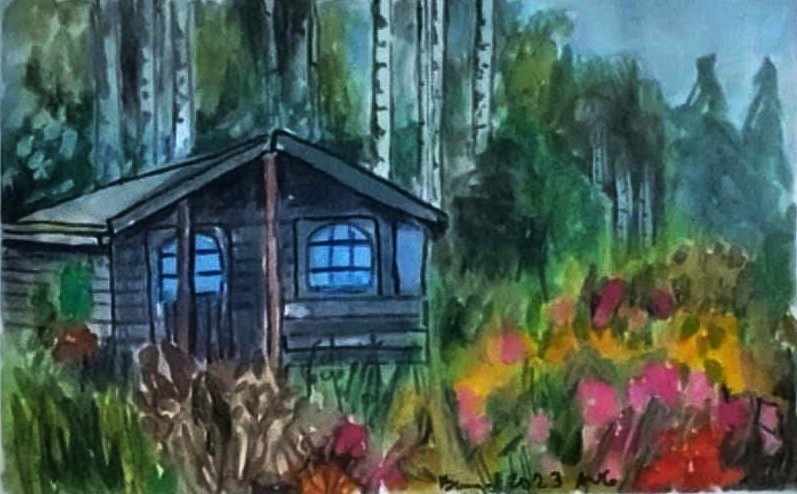
In my fieldwork in the urban gardens of Greater Helsinki in Finland (gardening seasons 2022 and 2023), I soon learned that drawing is one of the best methods to avoid falling into the trap of quick and efficient data gathering. I saw it as a methodological activism and intervention to slow down. Drawing enabled me to notice and see the diversity and depths of the multispecies entanglements of care in the gardens that unravel through slow immersion and being in the fieldwork.
Drawing as a method is a process and by practised in ethnographic fieldwork it can become a method of observing ‘what is going on’ rather than simply ‘what is out there’ (Kashanipour 2021:88). Choosing to go with the drawing as a process while observing what is going on also opens the method to the possibility of discovering, searching, finding, and improvising.
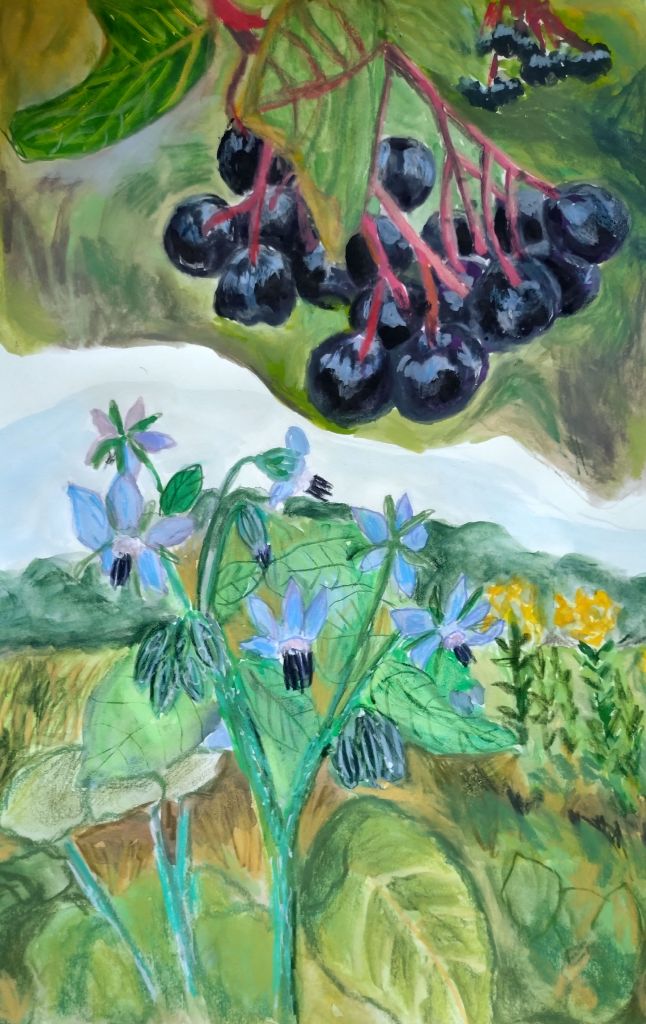
In my research, I have tried to let my stiffness go and experiment with drawing and sketching in a multitude of ways. I sketched in gardens using my perception of line and colour, I internalised my experiences, took photos and improvised later at my drawing desk at home. My experience throughout these experiments shows that drawing is also a very specific way of living and being a researcher. Especially if you are new to it or a returnee to this practice. Drawing requires adjusting one’s being in the field and getting out of our comfort zone. The movements and perception through drawing are different to taking verbal notes of observations. By slowing down, a researcher situates and embeds herself in the landscape. The researcher becomes part of the picture and an observer of it simultaneously.
Agnese Bankovska is a post-doctoral researcher at the University of Helsinki. This work is a part of a post-doctoral research project “Multispecies ethics of care in the gardening practices in Vantaa and Helsinki”, funded by Koneen Säätio, Finland, 2022-2024. Follow Agnese Bankovska on Instagram @bangadraws/
Artist: Sophie Anna Gibbings
Titles: Calabash cyanotypes & A Conversation Between Trees
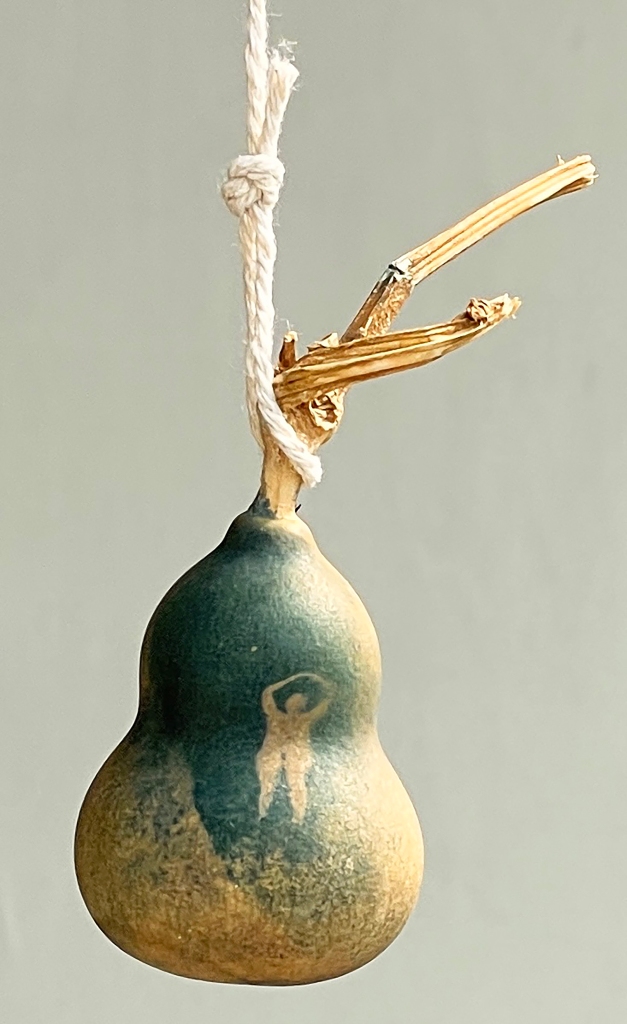
I am a regenerative artist working in collaboration with nature.
I reference the practices of regenerative agriculture and Indigenous wisdom of living in harmony with nature as entry points to my work. My process is more about an ecology of the mind, rather than a regeneration of soil. All the materials used for my artworks are found in the landscape and can be returned to the Earth, without any harm to her. It is at this intersection of material and landscape that I explore the core values of my work.
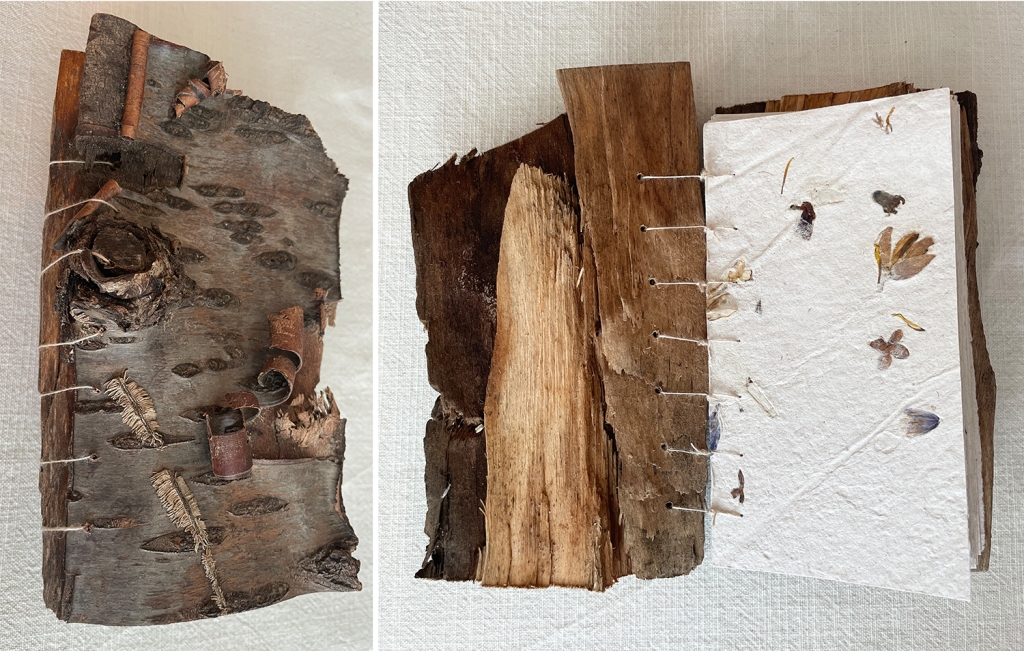
I don’t see myself separate from nature but rather as two artists working together. Performance is the beginning of this collaboration, often referencing my own body as it relates to nature’s body. Using different mediums, including printmaking, alternative process photography, painting, and sculpture, I am exploring how an initial performance done in the landscape can lead to many different bodies of work.
These works are ephemeral, and I have no attachment to their permanence, as we all come from nature and return to nature. By creating an opportunity for non-logical encounters with my art, I intend to increase the viewers sensibility to the environment. I am interested in what happens to the materials after and beyond their time on display, and how this consideration might help regenerate ecologies.
It is my hope that my work offers a new perspective, that stems from an ecology of the mind and addresses issues from the vantage point of a regenerative planet.
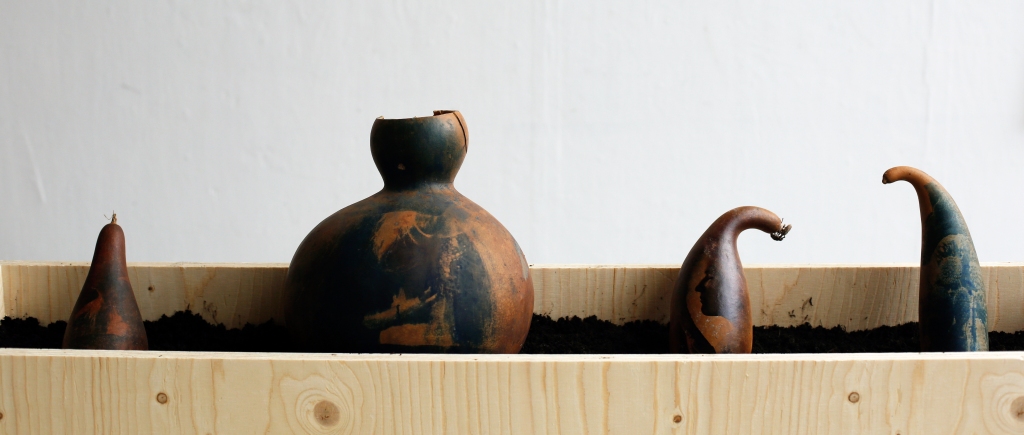
Follow Sophie Anna Gibbings on Instagram @sophieannagibbings or via her website https://www.sophieannagibbings.com/